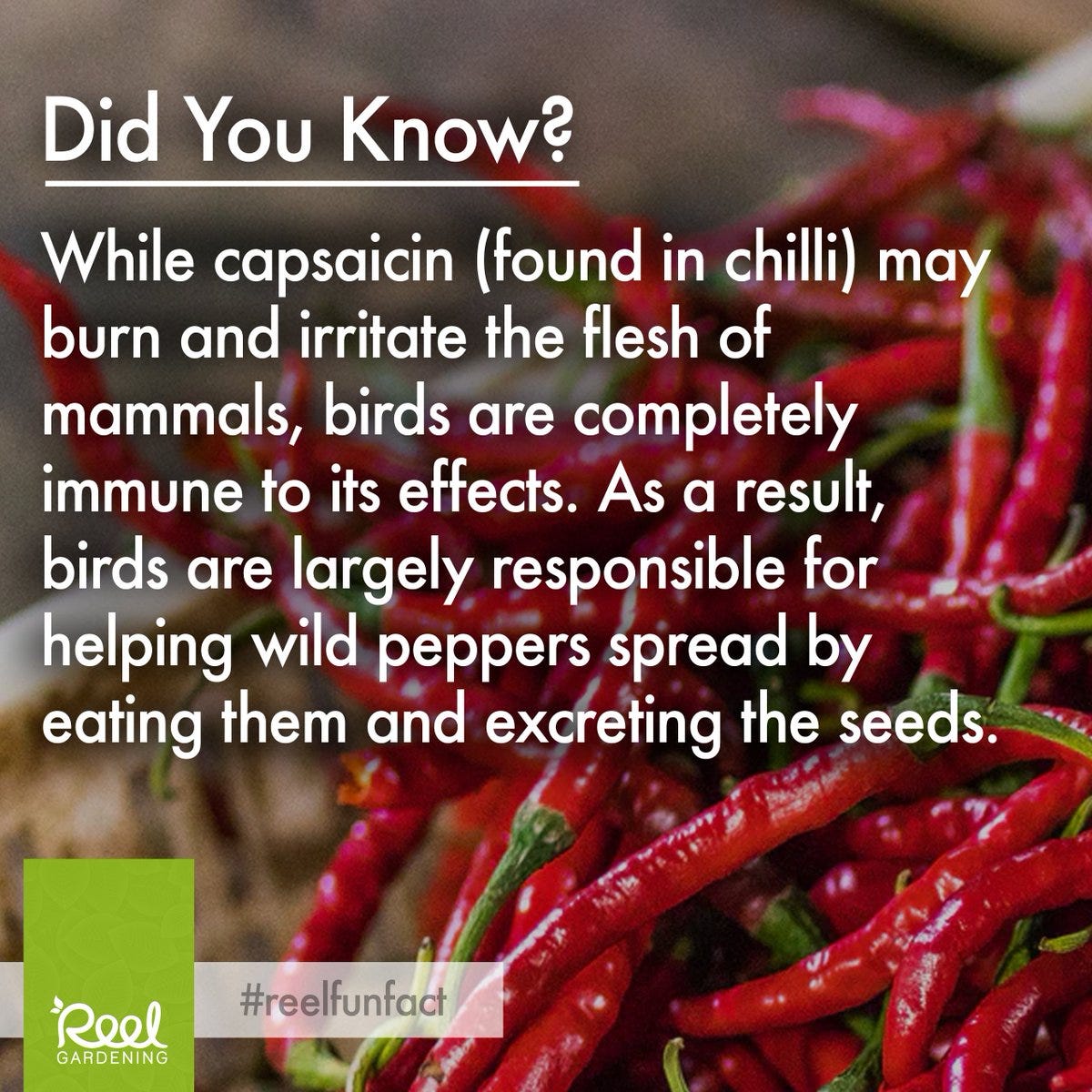Gochu spread by birds… to Baekdusan!

Gochu pepper spread by birds was a possible non-human pathway for its spread to Korea, if all peppers really must have originated elsewhere only from a single location on earth somewhere far, far away from Korea, namely Central America.
Eggplant and capsicum pepper both branched off from a common ancestor to both about 20 million years ago.

Eggplant origin is designated from either India or Africa. Capsicum pepper origin is usually designated from Central or South America. The common ancestor across far expanse of continents continues as diversified nightshade flowering plants Solanaceae.

Seeds in general are dispersed by fruit eating animals. But pepper evolved capsaicin compound that severely discourages mammals from eating the spicy seeds.
Rather, birds are unaffected by capsaicin, becoming through selection the preferential pepper seed dispensers, and can transport seeds pre-fertilized long distances to propagate ones that are not fully digested.
Perhaps brought by migrating birds across now submerged Beringia before the last Ice Age started 115kya, gochu split off 1 million years ago as a separate species according to the DNA chronological dendogram.

Unlike other regions during the coldest periods of the last Ice Age, the high mountains and deep valleys above and within the Korean Peninsula shielded the Baekdudaegan Refugium for many plant species to survive which later repopulated outward as the severity of the last Ice Age faded.
Gochu chanced to survive because of this Baekdudaegan Refugium, perhaps around the ponds and lakes nearby the grand Baekdusan peak where migrating birds frequent. When ancient Koreans first discovered gochu, they carried the seeds down into the peninsula to farm (eventually finding the Sunchang region especially suitable). Later when Baekdusan erupted to devastate the Balhae Kingdom and massively lost a quarter of its peak, wild gochu plants were wiped out from their old refugium pockets surrounding the mountain.

• the role of the BDDG as a Pleistocene refugium
Millet, soybeans, and short grain sticky rice were also later cultivated in and then spread from Northeast Asia.
For Peppers, “Hot” Quite Literally The Spice Of Life, University Of Florida Research Shows
July 26, 2001
Science Daily
https://www.sciencedaily.com/releases/2 … 103553.htm
In an article set to appear in Nature… conclude that mammals, sensitive to the chemical that makes peppers taste hot, avoid the Capsicum annuum pepper.
Birds, however, are unaffected by the chemical, known as capsaicin, and they happily eat the peppers.
This is essential for the plant, since birds release the seeds in their droppings ready to germinate — whereas if mammals ate the seeds, they would crunch them up or render them infertile, the researchers report.
The researchers did their investigation in a field in Southern Arizona about 35 miles south of Tucson, using the Chiltepine chili pepper, Capsicum annuum. The plant is the progenitor of virtually all peppers native to North America, including jalapeno, poblano and bell peppers.

Non-European human pathways can exist in other groups of people. There seems to be arguments that not just corn, beans, and squash but pepper also were also available to Native Americans across North America long before Columbus, whether by Meso-American trade routes or growing regionally in higher latitudes due to spread by birds.
The following article tries to stick to the “Columbus theory” for how peppers spread throughout the world in the main body. But in an update, native peppers were found in Texas. The Native Americans in North America had “botanical trade routes” from Mexico to present day Maine way up north which likely included pepper varieties up to the southwest region.
“European explorers were poor botanists, and it is likely that Native Indians ate chilies despite their records only referring to corn.”
A BRIEF HISTORY OF CHILI PEPPERS
May 17, 2020
https://www.legalnomads.com/history-chili-peppers/
Post-article update: My friend Tyler reached out to Mark Miller, who is one of the foremost chili experts in this world. I had wanted to know about which of the theories for North America was correct, if any.
His response was essentially that there were wild chilies growing in Texas and the more arid Southwest, and that they were used in Native American cooking.
So the plant was known by the Native American Indians and thus there was no specific need for a more domesticated variety.
In addition, he adds that botanical trade routes from Mesoamerica to the North American civilizations are well documented for all the important varieties of subsistence crops, corn (400 varieties in North American from Baja to Maine), beans and squash — which all have their indigenous base in the Southern Valleys of Mexico where capsicum chiles were grown.
He notes, “your link seems correct as far as large scale of domesticated chilies in North America”, but he added that European explorers were poor botanists, and it is likely that Native Indians ate chilies despite their records only referring to corn.
